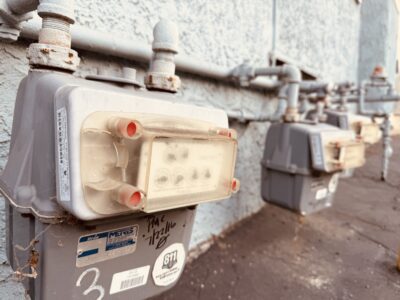Climate bill has votes to get through key House panel, says Waxman
Breaking news: Greenwire (via the New York Times) and Grist.com are reporting that Rep. Henry Waxman said tonight he “believe[s] we’ll have the votes for passage” to move his climate bill through the House Energy and Commerce Committee. (The Houston Chronicle is reporting that Rep. Waxman “expects” to have sufficient votes but takes a tone of skepticism.) Waxman plans to introduce the bill tomorrow, and the committee is expected to take up the bill right away. Grist reports the details of the new version of the bill, along with reactions from major environmental groups.
Here are some details of the revised bill, according to Grist.com:
Near-term emissions reductions: The bill now calls for greenhouse-gas emissions to be cut 17 percent below 2005 levels by 2020, down from 20 percent in the original draft (but higher than the 6 percent some moderate Dems wanted). The longer-term targets remain intact—45 percent cuts by 2030 and 85 percent by 2050.
Renewable electricity standard: The RES now requires 20 percent of electricity to be produced from renewable sources by 2020, with up to 5 percent of that coming from efficiency improvements. The draft bill called for an RES of 25 percent by 2025. More flexibility has also been built into the RES: If a state determines that it cannot meet the renewable target, it can increase the efficiency component to 8 percent and produce just 12 percent of its power from renewables. This change is meant to allay concerns of many southeastern Democrats that their states don’t have the renewable resources to meet a higher target.
***
Pollution permits: The bill would hand out the majority of emission permits free of charge, rather than making industrial polluters purchase them at auction. The original draft of the bill didn’t specify how permits would be distributed.
Under the current deal, 35 percent of the total allowances under the cap would be given to local electricity distribution companies in the initial years of the program. It’s not yet when and how those free allocations would scale down. Energy-intensive industries like steel, cement, and paper manufacturers would get 15 percent of the permits until 2025. At that point, the president would determine whether those free allowances were still needed.
***
Another deal made to please moderates, particularly John Dingell (D-Mich.), stipulates that the automobile industry would receive 3 percent of permits between 2012 and 2017, scaling back to 1 percent through 2025. The allowances will help “spur more innovations and new, green job creation here at home,” Dingell said on Wednesday.







Reader Comments